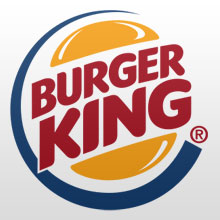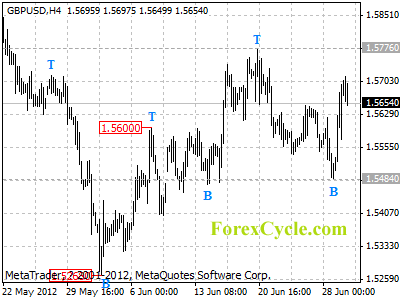By MoneyMorning.com.au
The Pavlovian response of financial markets to the European leaders’ summit of 28th and 29th June 2012 was remarkable. The frugal communiqué of 322 words fired the ‘animal spirits’ of financial markets, which now believe that the European debt crisis has been ‘solved’. As comedian Robin Williams joked, ‘reality is just a crutch for people who can’t handle drugs.’
The summit supported a single regulatory body for all European banks.
The previously agreed €100 billion capital injection for Spanish banks was ratified. Payments will now be made directly by the European Financial Stability Fund (EFSF) and its successor the European Stability Mechanism (ESM) to the banks rather than as loans to the relevant country. Loans will also not have priority of repayment over commercial lenders.
The EFSF/ ESM will take whatever actions are ‘necessary to ensure the financial stability of the euro area… in a flexible and efficient manner.’ This was taken to mean that they will purchase bonds of beleaguered countries like Spain and Italy to reduce the cost.
The European Union will provide €120-130 billion of financing for investment to boost growth.
The language was vague and the details sketchy. After the meeting German Chancellor Angela Merkel told the Bundestag that ‘differing communications’ from various Euro-Zone leaders about the exact agreement had ‘led to a whole number of misunderstandings.’
The initiatives may require complex and time-consuming changes in European treaties.
The German Constitutional Court must rule on some aspects of the current proposal.
In essence, implementation risks remain.
Conditional…
Bank recapitalisation will require the establishment of the EU central bank supervisory body, which should only be ‘considered’ by the Council before the end of 2012. Given issues of national control and sovereignty, the risk of delays and failure of agreement are not insignificant.
Capital injections are subject to unspecified ‘economy wide’ conditions. One potential condition could be that the national government compensate the EFSF or ESM for any losses. This is what Germany sought pre-summit, arguing that the EU could only lend to sovereigns, not foreign banks over which it had little or no control.
Routing funding directly does little to break the deadly nexus between European banks and their sovereigns. It does not address the fact that the banks are heavily exposed to sovereigns and this exposure will increase over time. It does not address the banks reliance on the European Central Bank (ECB) for funding.
The fact that bailout funds will not have repayment priority is not a change. As investors in Greek bonds discovered, the EU can, if they wish, retrospectively change the terms to subordinate commercial creditors in any case.
While the exact terms of any capital injection are unknown, the proposal creates a perverse incentive for the EU, especially Germany, to push for existing shareholders and bondholders in Spanish banks to absorb losses prior to the injection of new funds. This will be resisted by both investors and possibly the government, making it difficult to implement.
The potential for EFSF/ ESM purchases of Spanish and Italian bonds to provide funding and manipulate interest rates was actually agreed last year. It requires a member state to request assistance and execute a Memorandum of Understanding, which involves less onerous conditions than those applicable to a full bailout. The 29th June 2012 statement confirms that any assistance would be conditional.
The ECB already has the ability to intervene by purchasing bonds under its Securities Markets Programme. In fact, bond purchases by the ESM may reduce buying by the ECB, meaning less, rather than more support.
The growth initiative amounts to only 1% of Euro-Zone Gross Domestic Product (GDP). It was a repackaging of existing unspent funds and is unlikely to be operational quickly.
The summit communiqu?did not mention any progress on a Europe-wide deposit insurance scheme to limit capital flight from peripheral countries, although this may be a matter for the new European super bank regulator.
Where’s the Money…
There was no commitment of new money of any kind. Since mid-2011, Germany has succeeded in ensuring that existing bailout facilities are not increased.
The ability of the EU to support the peripheral nations on an ongoing basis is questionable.
The €440 billion of the EFSF is largely committed to the Greek, Irish and Portuguese bailouts, as well as the €100 billion required for Spanish banks. After the new ESM is fully implemented, there will be at most €500 billion available.
Potential requirements include a third bailout for Greece and further assistance for Ireland and Portugal. Additional money for recapitalising European banks may be needed. Spain and Italy have financing requirements of around €600 billion in the period to 2014, mainly to pay maturing debt.
This also assumes that the EFSF (which is backed by guarantees from Euro-Zone Members including Spain and Italy) and the ESM (which will require capital contributions totalling €80 billion from all Euro-Zone members) can finance its activities.
Support from the International Monetary Fund (IMF) is uncertain. The lack of conditions and supervision of loans may be a barrier to IMF participation. Domestic politics within the US in a Presidential year may also limit flexibility.
Arithmetical Impossibility…
The cost of support for the peripheral nations is rising. The ECB has provided over €2 trillion in the form of bond purchases and funding for European banks. Euro-Zone members are directly and indirectly supporting the two European bailout funds -the EFSF and ESM- for around €1 trillion. National central banks in Germany, Netherlands, Finland and Luxembourg have provided more than €700 billion in financing for weaker nations.
Even without agreement on Euro-Zone bonds, mutualisation of debt is already a fact as stronger countries, especially Germany and France, effectively underwrite these facilities. As more financing for weaker nations moves to official institutions, the commitment will increase.
Germany faces potential losses of between €800 and €1.4 trillion (up to 40% of its GDP). France also faces large losses. Chancellor Merkel has increasingly emphasised that Germany’s financial strength is not infinite.
The monetary arithmetic of European debt problems looks unsustainable.
The EU may simply not have enough funds to carry out their programs, unless the bailout funds are increased in some way or the ECB follows the US, UK and Japan into full scale quantitative easing to monetise European sovereign debt. As those countries have found, such measures also do not represent a simple solution.
Political Impossibility…
In the short run, the ECB will probably lower rates and continue to provide liquidity to manage the risk of financial collapse. But the deep seated problems remain.
The real economy – growth, employment, investment, capital flight out of weak nations – will continue to be problematic. The economic performance of stronger countries like Germany will deteriorate. The problems of the financial system – loan losses, funding difficulties – will continue. Weaker sovereigns will continue to face challenges in raising funds at acceptable costs.
The problems are increasingly political.
The June Summit highlighted deep fissures within the Euro-Zone itself. Germany, which is substantially bearing the financial burden of the European debt bailouts, finds itself increasingly vilified and isolated.
Spanish, Italian and French newspapers and political commentary were triumphant, depicting the summit as a humiliating back down by Germany. Northern European countries aligned with Germany have expressed concern about weaker conditions for aid to the indebted European countries. Dutch financial daily Het Financieele Dagblad wrote that ‘the southern euro countries are taking the north hostage.’
While her political position remains relatively secure, the German Chancellor faces increasing domestic criticism for providing assistance without extracting agreement to suitably tough conditions from recipients.
Chancellor Merkel insists that German taxpayers’ money will not be committed without strict conditions. She has reiterated that there was no increase in German guarantees for the Euro-Zone rescue funds and no jointly guaranteed Euro-Zone bonds to finance weaker states.
She insists that the commitment to use the EFSF/ ESM to buy sovereign bonds for countries facing market pressure would be conditional. Spain and Italy’s gleeful boasts of unconditional aid does not square with Dutch and Finnish insistence that any money would require compliance with strict conditions.
Germany and the Northern European countries’ willingness to continue to finance the existence of the Euro-Zone may be weakening.
At the summit, the joke of the day was that Germany lost 2-1 to Italy in the semi-finals of 2012 European soccer championship in Warsaw but lost 16-1 at the EU summit in Brussels! Italian Prime Minister Mario Monto, with uncharacteristic indiscretion, boasted that ‘it is a double satisfaction for Italy’, referring to Italian victories over Germany in both soccer and the debt negotiation.
Spain, Italy and France may well live to regret their triumphalism in antagonising their paymasters. The Euro-Zone itself seems the loser in the longer term.
Real Impossibility…
Despite progress, European leaders refuse to acknowledge that a portion of the debt of the peripheral nations is unrecoverable. None of steps announced improves the sustainability of the debt levels of the affected countries, their access to markets or cost of borrowing in the medium to long term. Ultimately, it is not possible to solve the problem of excessive indebtedness with more debt or by simply changing the lender.
Austerity dooms Europe to a prolonged contained depression as the debt burden is worked off. The alternative, a debt write-off, would result in significant loss of wealth for the mainly European lenders and investors, triggering an economic contraction and prolonged period of economic stagnation. There are now limited policy options available.
For the moment, investors and the non-German members of the Euro-Zone are celebrating. It would be wise to remember American writer Edgar Howe’s observation that, ‘There is nothing so well known as that we should not expect something for nothing – but we all do and call it hope.’
Satyajit Das
Contributing Writer, Money Morning
2012 Satyajit Das All Rights Reserved.
Satyajit Das is author of Traders Guns & Money and Extreme Money.
From the Archives…
The Hard Lesson of a Stock Trader: No Pain, No Gain
2012-06-29 – Kris Sayce
How Gold Prices Look Set to Climb As Banks Crumble
2012-06-28 – Peter Krauth
‘Big Wednesday’ For the Aussie Dollar
2012-06-27 – Dr. Alex Cowie
Three Reasons Why Silver Could Take Off in 2012
2012-06-26 – Dr. Alex Cowie
Who is Winning the Battle Between the Bulls and Bears?
2012-06-25 – Kris Sayce

‘Super Brussels’ Saves The World Again: Maybe!

